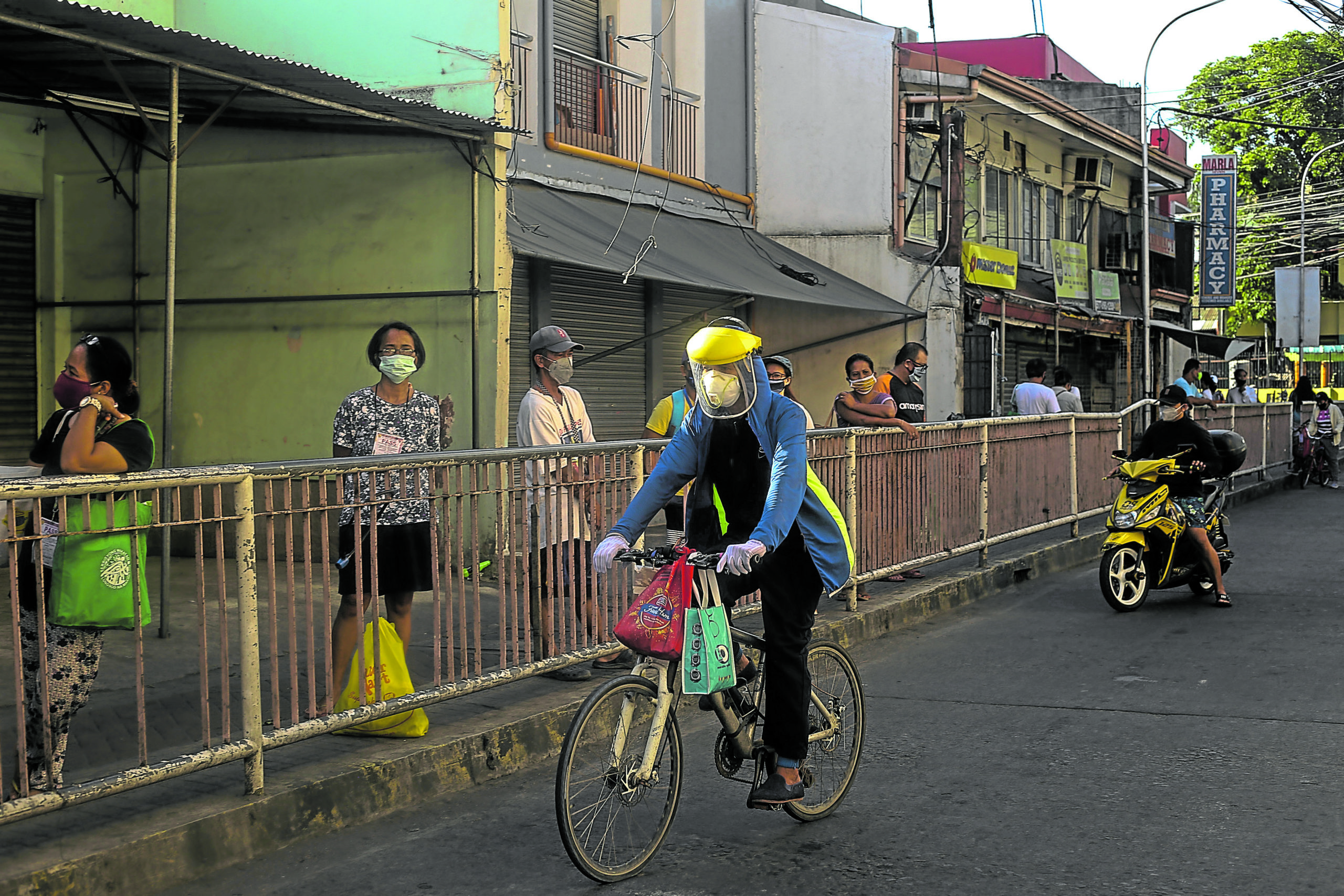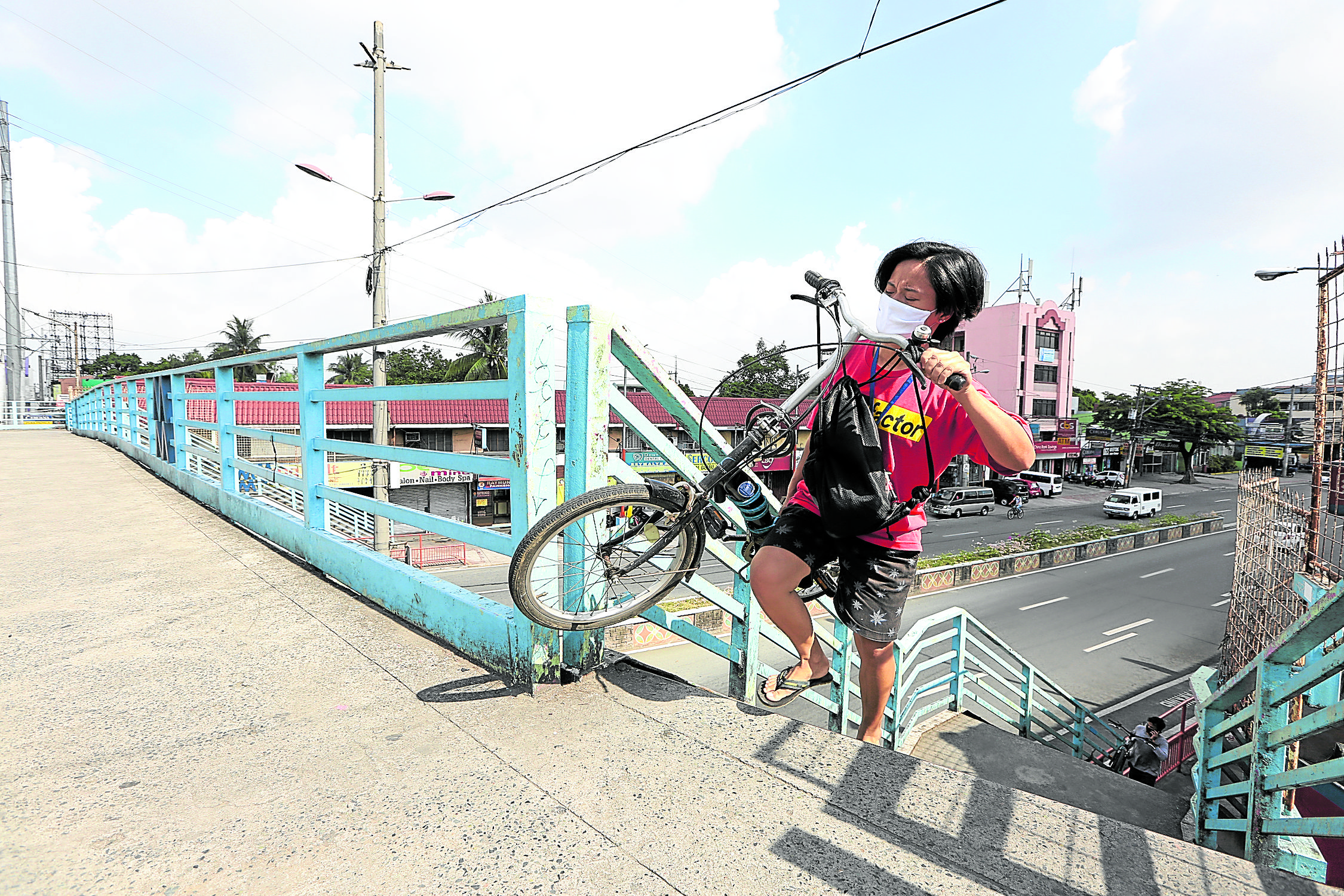
Riding a bicycle for mobility in the Philippines isn’t just a lifestyle choice, it’s an act of resistance.
Everything, it often seems, has been designed to work against the cyclist. Our road system was designed around cars and other motorized vehicles, with no provision for bicycles and hardly any for pedestrians. Bicycle lanes, when they exist at all, are often a poorly designed afterthought—better than nothing, but not much else.
Bike parking consists of a few token racks in some malls. As for lockers and shower facilities in places of work, dream on.
The bicycle retail industry itself favors expensive road racing and off-road bikes designed for leisure. Cyclists looking for practical, affordable machines for everyday commuting have to roll their own, or look to the gray market for surplus Japanese “mama-chari” (mom’s bikes).
Despite these obstacles, the local bicycle culture has managed to thrive.
Cycling tribes include roadies and mountain bike weekend riders, fixed gear and folding bike enthusiasts, and hardcore bicycle commuters.
Passionate, tenacious
Filipino bicycle advocates are a passionate and tenacious lot. They’ve seen the light: Cycling brings fitness, is good for the environment, and offers an alternative to traffic woes.
The sight of essential workers riding bicycles to work during the quarantine has opened up a space in the public discourse for cycling groups to push their agenda. For the past few weeks, bicycle advocacy groups have flooded mainstream and social media with calls for including the bicycle in any planning for the post-pandemic “new normal.”
Last May 15, a coalition of bicycle advocates presented government with a “Petition for Inclusion of Bicycling in Post-Quarantine Transportation Measures”:
“The COVID-19 pandemic has made one thing abundantly clear: We cannot solve this crisis by acting as if it were business as usual. Social distancing will become part of everyday life, and it will put a strain on existing social services, especially the public transit sector…”
“We need a fast-acting solution that will uphold social distancing and get our work force to their destinations. Bicycling is a simple and easy answer, as can be seen in many progressive cities in the world. Bicycling can be a preferred mode of transportation that allows Filipinos to exercise, cover a great distance, carry some load, and lessen the time exposed to possible carriers of the virus while making our environment healthier and our cities more humane.”
Among other things, the petition called for the creation of connected bicycle lanes within cities, providing safety measures for cyclists through “physical road provisions, traffic calming measures, as well as by educating motorists on sharing the road and giving way to cyclists,” and enacting laws and ordinances to promote and protect bicycling.
“There’s a lot of interest in cycling now as a means of transportation, because there is nothing else that people can do,” former Comelec commissioner and cycling advocate Gregorio Larrazabal said in a radio talk show. “Pero pustahan tayo, as soon as the ECQ is lifted, people will forget about bicycles as a means of transportation because they will move on. So how do you sustain this?”
Alarming traffic surge
The alarming surge in car traffic after the ECQ was “modified” might well prove Larrazabal right. But there have been a few encouraging signs.
A few forward-thinking local governments such as Marikina City and Iloilo City have created bicycle pathways that have been cited as possible models for other towns and cities.
Taguig City built a 3-meter-wide separate bicycle lane along the C-6 highway—only 6 km long, but still…
More recently, Pasig Mayor Vico Sotto directed the expansion of the city’s bicycle pathways to provide mobility for residents during the quarantine.
Perhaps most significantly, the Metro Manila Development Authority announced that government plans for the new normal might include a separate bicycle lane along Edsa, an idea that would have been unthinkable before the pandemic.

“In the Philippines and in many places in the world where there had been no existing culture of cycling as transport, policies and programs for cycling had been put in place because there were champions in government positions—in the person of usually the mayor (e.g. Bogota, Colombia),” said Katti Sta. Ana, convenor of the Firefly Brigade, the country’s longest-running bicycle advocacy group.
An artist and art educator with a background in urban planning, Sta. Ana was instrumental in planning and constructing Marikina’s system of bicycle paths when she served as a consultant during the term of former Mayor Bayani Fernando.
Marikina is often cited as an example of a bicycling-friendly city, but Sta. Ana believes it takes more than just infrastructure to sustain cycling as a form of daily transportation.
Education
“What are the lessons from the Marikina experience? That education is key: developing a culture of cycling starts in the home—the family, continued in school, protected and espoused by society through policies.
“As seen in Marikina, like all policies, it can easily be set aside, with the change in decision-makers (elected and appointed officials) who may not have an appreciation for them.
“But if cycling is a way of life for children, and its importance is taught in the home and in school, there’s a greater chance that it will also become a part of the life of the city. If everyone appreciates cycling as transport, and everyone rides the bicycle to go to market, school and other errands, even just for short distances, cycling and cyclists will be protected. Bike lanes would be a happy bonus, and not a necessity.”
A more recent example outside Metro Manila is Iloilo City, another bike-friendly city where cycling has also proven a practical mobility solution in the pandemic.
“We have two separate organized efforts initiated in Iloilo in support of the front-liners’ mobility during the quarantine period,” said Iloilo artist and bicycle advocate Rock Drilon.
“One is by the local government through its Bike Council, which partnered with the tour group FitStop to lend bamboo bikes to front-liners, and another by a university-based bike organization, C4f, whose members volunteered to lend their bikes to doctors and nurses during the lockdown. The streets were empty so many people opted to use the bicycle as a means of transport. The bike infrastructure provided added confidence to beginner bikers.”
Drilon added that the local government is planning to further expand the city’s bicycle infrastructure to connect major destinations such as plazas, malls, markets and schools.
“When realized, a more comprehensive bike lane network for Iloilo City will be in place during the pandemic so Ilonggos on bicycles can be safer when biking to work, school, doing errands and eventually, when biking just for leisure and doing bike tours, which was gaining ground before COVID,” Drilon said.
More than just infrastructure, however, a wider acceptance of cycling by Filipinos requires a significant shift in mindset.
Less materialism
“We really need to have a greater appreciation for the simple things in life that build community,” said Firefly Brigade’s Sta. Ana.
“Unfortunately, people in our society are increasingly becoming materialistic and consumerist. We’ve built a culture around cars, malls and condos. Look at us now. No matter how much we widen our roads, they still get filled up by cars. And we are all so stressed by the gridlock. We’re spending less quality time with our families because of it. We get into a road rage; we’re killing one another because of traffic!”
“Hopefully, this pandemic will reorient us to the basics: that people need food, good health, family, friends and an easy way of getting around for our basic necessities—a job to pay for the basics, and food to feed ourselves. We’ve seen how cars, condos, malls have contributed to congestion and unhealthy lifestyles.
“As has been said, and which until now rings true: The bicycle is the greatest human invention. It has proven itself through time—It doesn’t cause harm if pedaled at a reasonable speed; it doesn’t pollute the environment; it is powered by human energy; it can take people places, it can build community, it brings people joy.”
As the writer H.G. Wells once said: “Every time I see an adult on a bicycle, I no longer despair for the future of the human race.”








































